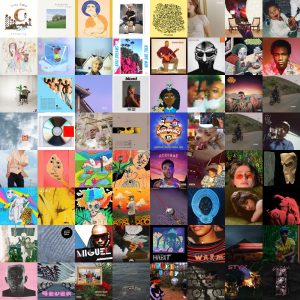Opinion: The Scam that is Black Friday
What is the truth behind such seemingly irresistible sales?
November 23, 2022
Black Friday can be defined as a subculture to the traditional American holiday Thanksgiving. It is a day that sends American shoppers into a shopping frenzy due to unbelievable sales and shiny banners displaying those alleged sales. In fact, there were 155 million shoppers in the United States on Black Friday in 2021, almost half the US population. In 2021 shoppers spent $8.9 billion in online Black Friday sales.
However, Black Friday isn’t what it is hyped up to be. Culture, retailers, and human psychology all play a part in the scam that is Black Friday.
This Friday is all about the sales. Sales from clothes to food range from 30% off to 90% off, all in the hopes of enticing customers. But shoppers tend to ignore the extent of markups on the day after Thanksgiving.
At department and chain stores, the initial markup is typically 70 to 80 percent. This essentially means that, before Black Friday, stores raise prices by around 70 percent and then claim to put them on sale. On average, it will take an average discount of 58% to coax Americans out to shop on Black Friday. In short, the average American is willing to buy a product that has been marked up by 70% for a mere 58% sale.
The Black Friday swindle isn’t easy to spot for the regular consumer. This has to do with how businesses market and how consumers react. The human brain is not purely rational. When people see complicated numbers such as $999.99 instead of $1,000, they see a bargain. Regardless of a one-cent difference, more complicated numbers would cause us to question how that number was calculated. Hence the shiny banners that show prices such as $9.99 and $29.99 instead of $10 and $30, which creates the tactic known as charm pricing.
However, the way humans interpret marketing plays a huge role. In fact, consumers use 20% logic and 80% emotion. More specifically, the emotion of likeability is the most predictive of whether an advertisement will increase a brand’s sales. So hypothetically speaking, a person is more likely to buy a product or a service whether they like it, whether it is worth it, or if they need it.
As said by journalist Mark Ellwood, “We’re chemically programmed to respond to sales…. There are hormones in our brains that activate when we see a sale. The chemical that triggers that reaction is one of the biggest chemical rewards we have. The more you make someone feel good about a sale, the more they’ll come back.”
What makes Black Friday sales unique is the culture surrounding what can be seen as regular marked-up sales.
It is the biggest shopping day of the year, having started in the late 19th century. Thus, it is not just dramatic sales that contribute to mindless consumerism but also the tradition that has normalized the behavior.
Retailers are not doing anything illegal, of course; however, they are playing into how consumers react to tradition and marketing. It is time people become aware and shop mindfully rather than falling into the trap marketers and big businesses set for the average shopper.











